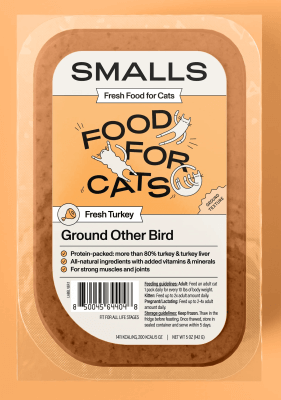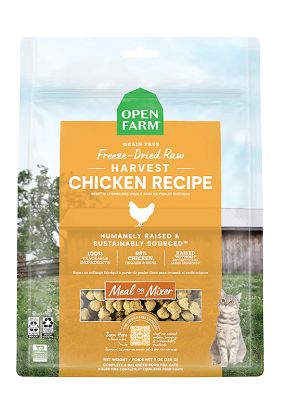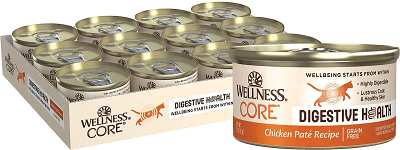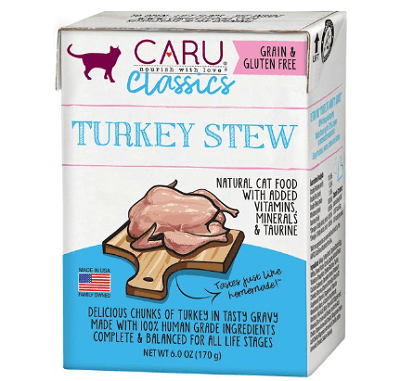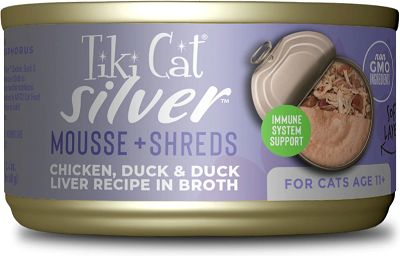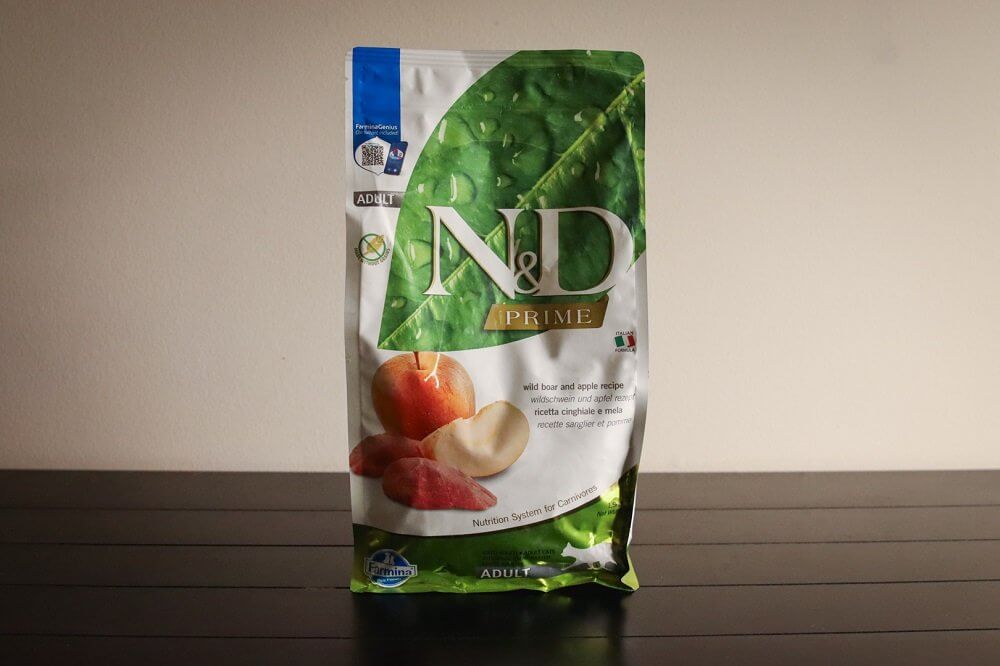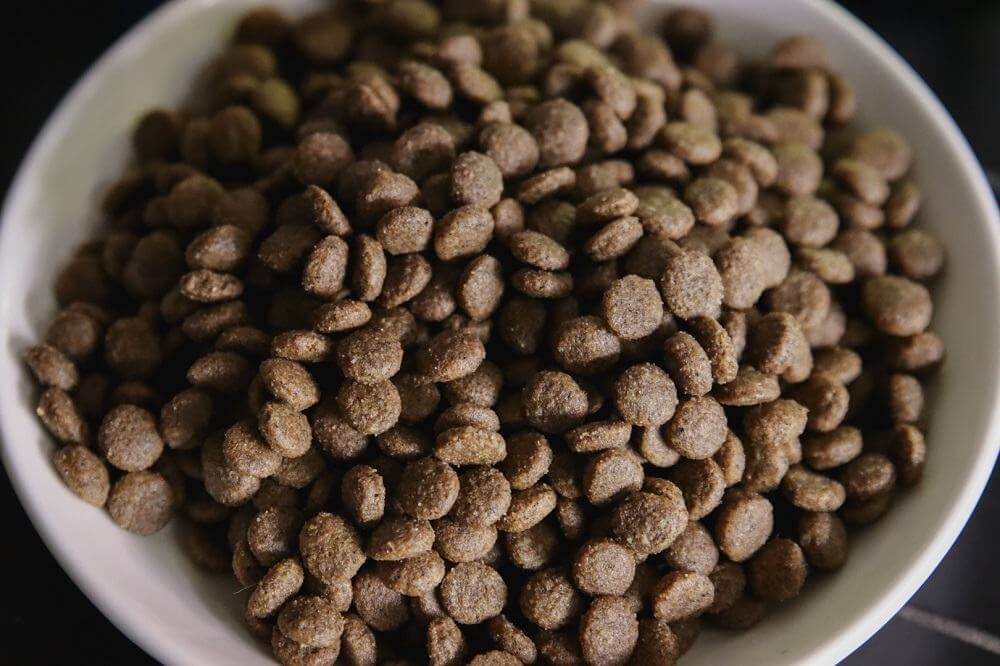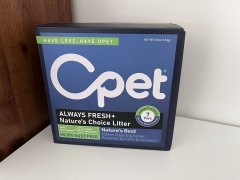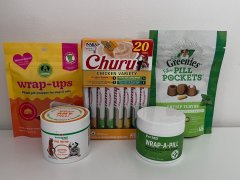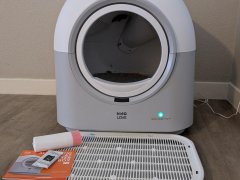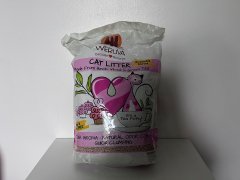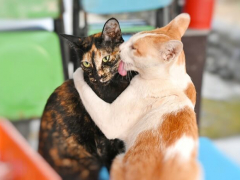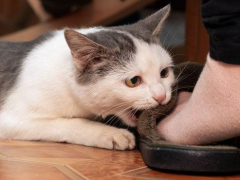
Kirsten McCarthy / Cats.com
The best cat food to stop vomiting is made with highly digestible, species-appropriate ingredients and free from potential irritants.
Packed with animal-sourced protein and hydrating moisture, Smells Fresh Ground Other Bird is our top pick. Made with turkey as the sole source of protein, it’s a carnivore-appropriate choice and a good option for cats with food allergies or sensitivities to chicken or fish.
While modifying your cat’s diet may help reduce digestive upset, identifying the cause of your cat’s vomiting is key. Your veterinarian can help you diagnose any underlying health issues and make recommendations for dietary changes that might help manage their condition.
At a Glance: The Best Cat Food for Vomiting To Buy





Smalls Ground Other Bird Fresh Cat Food
- Made with a single source of animal protein
- Very low carbohydrate content
- Good source of hydrating moisture
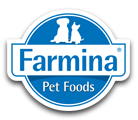
Farmina N&D Prime Boar & Apple Recipe Adult Cat Dry Food
- Packed with animal-sourced protein
- Salmon oil provides anti-inflammatory omega-3s
- Very low in carbohydrates

Open Farm Harvest Chicken Freeze-Dried Raw Cat Food
- Meat-centric recipe made with a single protein
- Salmon oil provides animal-sourced omega-3s
- Short list of easily digestible ingredients
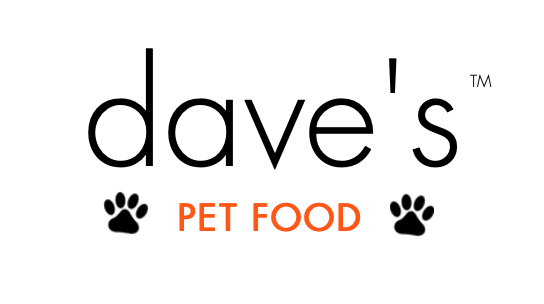
Dave’s Pet Food Naturally Healthy Grain-Free Turkey Formula Canned Food
- Affordably priced under $0.30/ounce in 12.5-ounce cans
- Rich in animal-sourced protein from chicken and turkey
- Flavorful source of hydrating moisture for cats

Wellness CORE Digestive Health Chicken Pate Recipe
- Highly digestible for most cats
- Top four ingredients are all animal-based
- Supplemented with prebiotic fibers
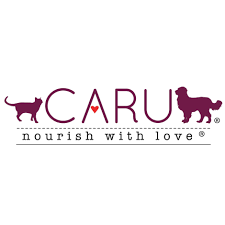
Caru Classic Turkey Stew Wet Cat Food
- Rich in animal-sourced protein
- Easily digestible with low carbohydrate content
- Hydrating source of moisture for cats
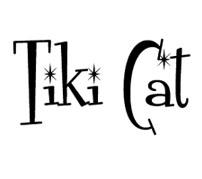
Tiki Cat Silver Chicken, Duck & Duck Liver Recipe
- Made from high-quality, easy-to-digest protein sources
- Doesn’t contain any sources of plant protein
- May help to relieve inflammation
Why Trust Cats.com
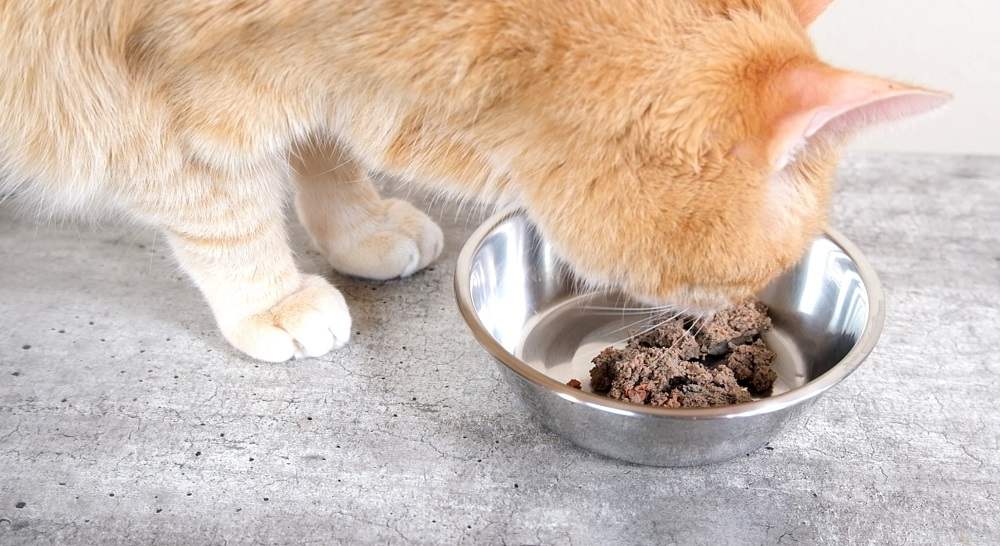
Mallory Crusta / Cats.com
I spent several hours researching the subject of vomiting in cats to find out what causes it and how dietary changes might help resolve the issue. Having identified the features that make a cat food product appropriate for cats suffering from vomiting, I performed in-depth brand research, evaluated product labels, and read customer reviews to choose the best products for testing.
All products featured in this guide were purchased at full retail price and tested in-house with my three cats. My cats’ opinions heavily informed my picks, but I also made my own observations about the food’s appearance, texture, consistency, smell, and packaging.
Our Top 7 Picks for the Best Cat Food To Stop Vomiting
While occasional vomiting is common in cats, repeated occurrences of vomiting accompanied by other symptoms or changes in behavior should be addressed with your veterinarian. Acute vomiting — vomiting that lasts only a day or two — may not require treatment. If your cat’s vomiting is a chronic issue, dietary modification could help but additional treatment may be required.
If your cat’s vomiting is a dietary issue, improving the digestibility and species appropriateness of their food might help. For its meat-centric formula and high moisture content, Smalls Fresh Ground Other Bird is our top pick for the best cat food to stop vomiting. But it may not be the ideal choice for every cat.
We’ve assembled a list of diverse recommendations to help you find the product that works for you and your cat.
Best Cat Food To Stop Vomiting: Comparison Table
| Product Name | Smalls Ground Other Bird Fresh Cat Food | Farmina N&D Prime Boar & Apple Recipe Adult Cat Dry Food | Open Farm Harvest Chicken Freeze-Dried Raw Cat Food | Dave’s Pet Food Naturally Healthy Grain-Free Turkey Formula Canned Food | Wellness CORE Digestive Health Chicken Pate Recipe | Caru Classic Turkey Stew Wet Cat Food | Tiki Cat Silver Chicken, Duck & Duck Liver Recipe |
| Primary Protein | Turkey | Wild Boar | Chicken | Turkey | Chicken | Turkey | Chicken |
| Guaranteed Protein (%) | 14.5 | 44 | 47 | 10 | 10 | 9 | 12 |
| Ash (%) | 2.29 | 8.7 | 1.2 | 2.31 | 2.5 | 1.58 | N/A |
| Calcium (%) | 0.49 | N/A | 3 | 0.63 | N/A | 0.25 | 0.3 |
| Phosphorus (%) | 0.37 | 1.3 | 1.8 | 0.38 | 0.3 | 0.24 | 0.14 |
| Calories Per Ounce | 40 | 118 | 149 | 33 | 34 | 30 | 31 |
| Cost Per Day | $4.00 per day | $0.97 per day | $3.87 per day | $1.64 per day | $3.66 per day | $3.67 per day | $4.98 per day |
What To Look For in Cat Food To Stop Vomiting
Vomiting is a common gastrointestinal issue in cats. In many cases, it is mild and resolves itself in a few days. Other times, however, it can last for weeks and become a much more serious health problem.
Take your cat to the vet if vomiting has become problematic or if you notice additional symptoms (especially blood in the vomit). Your vet may recommend a bland diet for a few days to give your cat’s tummy a break, but you should also consider a permanent switch to a higher quality, more digestible food to prevent the issue from recurring.
A new diet of low-carb, allergen free, and all-natural food could help to calm your cat’s tummy and stop the vomiting. Work with your vet to come up with the best treatment plan to stop your cat’s vomiting.
Here are some features to look for in cat food to stop vomiting:
- Made primarily with animal ingredients: Food composed mainly of animal-sourced proteins and fats will be the most digestible for your cat. Avoid products that don’t list an animal ingredient first or that contain more plant than animal ingredients.
- Moderate fat content: Some cats have trouble tolerating rich foods, so look for a food with a moderate fat content between 10% and 20%, measured as dry matter.
- Dry matter carbohydrate content under 10%: High-carb foods can be difficult for your cat to digest and may trigger digestive issues. Whole grains, fruits, and vegetables are generally more digestible than legumes and processed grains like corn, wheat, and soy.
- Short list of ingredients: The fewer components there are to your cat’s diet, the less likely it is to trigger a negative reaction. Look for a product with ten or fewer ingredients listed before the first supplement.
- Free from potentially irritating ingredients: Some cats have sensitive stomachs and react poorly to certain ingredients in their food. Every cat is different, but common culprits include synthetic additives, animal by-products and vaguely named meals, dairy products, and carrageenan.
When changing your cat’s diet, be sure to transition them slowly onto the new product. Sudden dietary changes can trigger digestive problems in cats and may make vomiting worse. Start by mixing a little of the new food into your cat’s current diet and increase the proportion of new to old food over the course of at least 7 to 10 days.
Frequently Asked Questions
What can I feed my cat to stop vomiting?
If your cat is vomiting due to digestive upset, a bland, easily digestible food given in small quantities may help. Try small portions of boiled chicken or turkey, canned pumpkin, steamed rice, cooked sweet potato. Avoid high-fat and overly seasoned foods.
What cat food is easiest on the stomach?
Cat food that mimics a whole-prey diet is generally the most digestible option for carnivores like your cat. Focus on animal-sourced proteins and fats, avoiding animal by-products, artificial additives, and hard-to-digest carbohydrates like legumes, corn, and wheat.
Why is my cat vomiting but acting normal?
Vomiting that isn’t accompanied by other physical symptoms or behavioral changes is likely a reaction to the formulation of their food or an ingredient in it. Poor nutritional quality or excessive fat content may trigger digestive upset in cats, as can a sudden change in diet.
